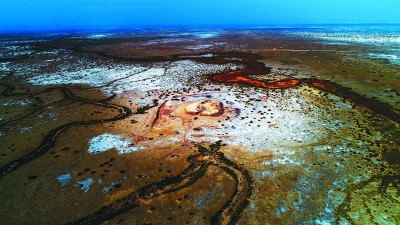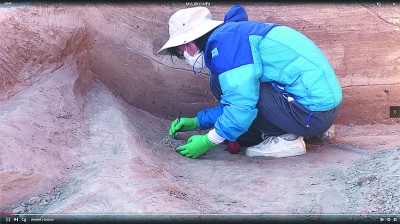
Aerial photo provided by the Xinjiang Institute of Cultural Relics and Archaeology shows the ancient city in Luntai County of Bayingolin Mongol Autonomous Prefecture, northwest China’s Xinjiang Uygur Autonomous Region.

Photo provided by the Xinjiang Institute of Cultural Relics and Archaeology shows an archaeologist excavate in the ancient city in Luntai County of Bayingolin Mongol Autonomous Prefecture, northwest China’s Xinjiang Uygur Autonomous Region.

Photo provided by the Xinjiang Institute of Cultural Relics and Archaeology shows the excavation site of the ancient city in Luntai County of Bayingolin Mongol Autonomous Prefecture, northwest China’s Xinjiang Uygur Autonomous Region.
Guangming Daily, Urumqi, January 15: The reporter learned from the Xinjiang Institute of Cultural Relics and Archaeology that, after three years of active archaeological work by the Xinjiang Institute of Cultural Relics and Archaeology and the School of Archaeology and Museology of Peking University, it has been made clear that the ancient city of Kuiyukexiehaier, located in Luntai County of Bayingolin Mongol Autonomous Prefecture, northwest China’s Xinjiang Uygur Autonomous Region, was established in the 5th century BC and abandoned around the first year AD. It is currently the earliest city site identified in Xinjiang by archaeology, which provides important clues for studying the evolution from settlement to city-state in the Tarim Basin during the prehistoric civilization period.







